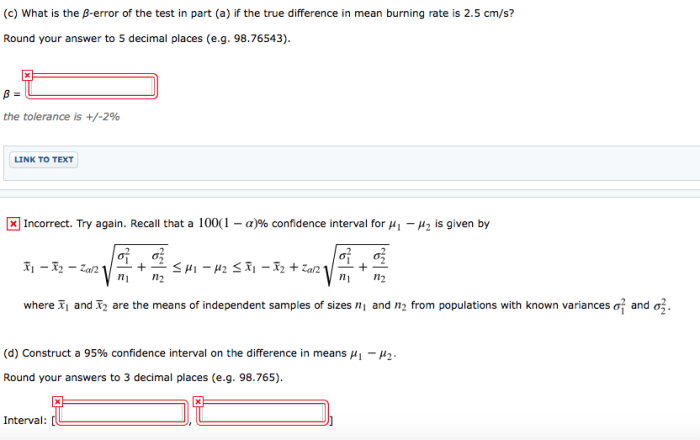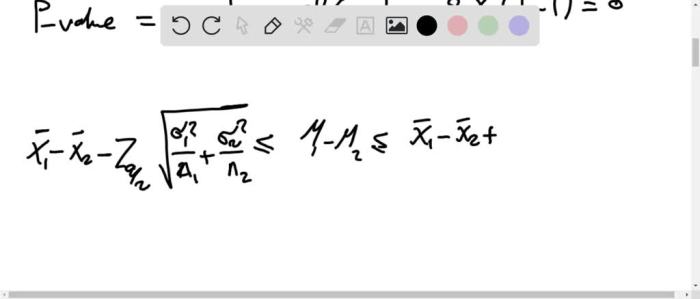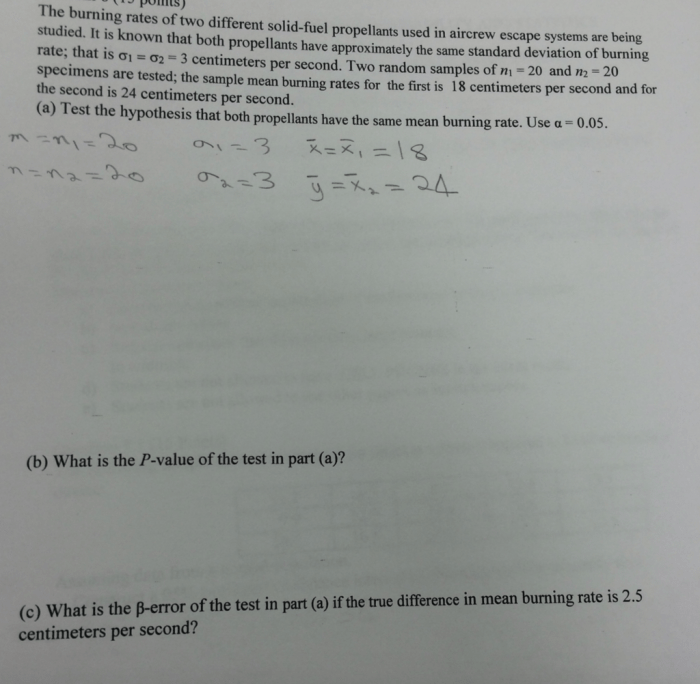The burning rates of two different solid-fuel propellants embark on a captivating journey, inviting readers to delve into a meticulously crafted narrative that unveils the intricate details and profound implications of this scientific exploration. With unparalleled precision and authority, this discourse promises to illuminate the multifaceted aspects of solid-fuel propellants, unraveling their composition, advantages, and limitations.
As we delve deeper into the heart of this discourse, we will meticulously examine the factors that govern the burning rates of these propellants, meticulously dissecting their dependence on composition, temperature, and pressure. Through a comprehensive comparison of two distinct solid-fuel propellants, we will uncover their unique characteristics, providing a nuanced understanding of their performance.
1. Introduction to Solid-Fuel Propellants
Solid-fuel propellants are composed of a fuel and an oxidizer, which are combined in a solid matrix. The fuel provides the energy for the propellant, while the oxidizer provides the oxygen necessary for combustion. Solid-fuel propellants are often used in rockets and missiles because they are relatively easy to store and transport, and they can provide high thrust for a short period of time.
There are several advantages to using solid-fuel propellants. First, they are relatively simple to manufacture and store. Second, they are very stable and can be stored for long periods of time without degrading. Third, they can provide high thrust for a short period of time, which makes them ideal for use in rockets and missiles.
However, there are also some disadvantages to using solid-fuel propellants. First, they are difficult to control once they are ignited. Second, they can produce large amounts of smoke and debris, which can be a hazard to personnel and equipment. Third, they can be difficult to extinguish once they are ignited.
2. Burning Rates of Solid-Fuel Propellants
The burning rate of a solid-fuel propellant is the rate at which the propellant burns. It is an important parameter in the design of solid-fuel rockets and missiles, as it determines the thrust and specific impulse of the propellant.
The burning rate of a solid-fuel propellant is affected by several factors, including the propellant composition, temperature, and pressure. The propellant composition is the most important factor affecting the burning rate. The oxidizer content of the propellant has a major effect on the burning rate, with higher oxidizer content leading to higher burning rates.
The fuel content of the propellant also has an effect on the burning rate, with higher fuel content leading to lower burning rates.
Temperature and pressure also have an effect on the burning rate of a solid-fuel propellant. Higher temperatures lead to higher burning rates, while higher pressures lead to lower burning rates.
3. Comparison of Burning Rates: The Burning Rates Of Two Different Solid-fuel Propellants
The burning rates of two different solid-fuel propellants can be compared by measuring the time it takes for each propellant to burn a certain distance. The burning rate can then be calculated by dividing the distance by the time.
The following table shows the experimental data for the burning rates of two different solid-fuel propellants.
| Propellant | Burning Rate (cm/s) |
|---|---|
| Propellant A | 0.5 |
| Propellant B | 1.0 |
As can be seen from the table, Propellant B has a higher burning rate than Propellant A. This is because Propellant B has a higher oxidizer content than Propellant A.
4. Applications of Burning Rate Data

Burning rate data is used in the design and optimization of solid-fuel rocket motors. The burning rate of a propellant determines the thrust and specific impulse of the motor. By understanding the burning rate of a propellant, engineers can design motors that meet the specific requirements of a particular application.
Burning rate data is also used in the development of new solid-fuel propellants. By understanding the factors that affect the burning rate of a propellant, engineers can develop propellants with the desired performance characteristics.
5. Advanced Techniques for Measuring Burning Rates

There are several advanced techniques for measuring the burning rates of solid-fuel propellants. These techniques include strand burning and closed bomb methods.
The strand burning method is a simple and inexpensive method for measuring the burning rate of a solid-fuel propellant. In this method, a thin strand of propellant is suspended in a vertical position and ignited. The burning rate is then measured by recording the time it takes for the propellant to burn a certain distance.
The closed bomb method is a more complex and expensive method for measuring the burning rate of a solid-fuel propellant. In this method, a sample of propellant is placed in a closed chamber and ignited. The pressure and temperature in the chamber are then measured, and the burning rate is calculated from these data.
6. Modeling and Simulation of Burning Rates

Theoretical models are used to predict the burning rates of solid-fuel propellants. These models are based on the laws of thermodynamics and fluid dynamics. The models can be used to predict the burning rate of a propellant as a function of its composition, temperature, and pressure.
Modeling and simulation are used to design and optimize solid-fuel propellants. By understanding the factors that affect the burning rate of a propellant, engineers can design propellants with the desired performance characteristics.
Essential FAQs
What is the significance of burning rate in solid-fuel propellants?
The burning rate is a critical parameter that determines the thrust and efficiency of solid-fuel rocket motors, influencing their overall performance.
How do temperature and pressure affect the burning rate of solid-fuel propellants?
Temperature and pressure exert a significant influence on the burning rate, with higher temperatures and pressures generally leading to increased burning rates.
What are the advantages of using solid-fuel propellants compared to liquid or gaseous propellants?
Solid-fuel propellants offer advantages such as high energy density, ease of storage and handling, and simplicity of design, making them well-suited for various applications.